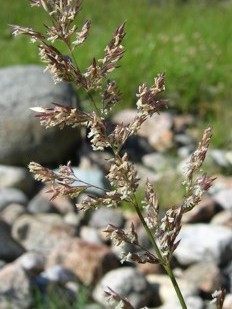Creeping Brent Grass
(Agrostis gigantea gigantea)

Description
Agrostis stolonifera (creeping bentgrass, creeping bent, fiorin, spreading bent or carpet bentgrassIt is the most commonly used species of Agrostis It is used for turf in gardens and landscapes, particularly on golf courses. Many of the putting greens as well as an increasing number of fairways in the northern USA are creeping bentgrass. Early work in creeping bentgrass transgenics looked at glyphosate-resistance. However, due to easy wind pollination, seeds were dispersed into the environment. A 2004 gene flow study (with scientific sampling methods) documents gene flow on a landscape level, with a maximum at 21 kilometres (13 mi) and 14 km (8.7 mi) (respectively) in sentinel and resident plants observed by scientist, located in primarily nonagronomic places such as irrigation ditches. Other work in transgenic bentgrass looks into salinity tolerance. The improved performance of the transgenic plants was associated with higher relative water content, higher sodium uptake and lower solute leakage in leaf tissues, with higher concentrations of Na+, K+, Cl- and total phosphorus in root tissues, and with higher auxin accumulation rate in the root tissue. This transgenic plant can survive in the presence of 1.7% sodium chloride (half seawater salinity concentration), while the non transgenic line and wild type plants cannot) is a perennial grass species in the family Poaceae Agrostis stolonifera is stoloniferous and may form mats or tufts. The prostrate stems of this species grow to 0.4–1.0 metre (1 ft 4 in – 3 ft 3 in) long with 2–10-centimetre (0.79–3.94 in) long leaf blades and a panicle reaching up to 40 cm (16 in) in height. The ligule is pointed and up to 5 millimetres (0.20 in) long. This differs from common bent, Agrostis capillaris, which is short and does not come to a point. The leaves are tapering, often with a blue-grey colour. The grass is not tufted and the spikelets are red and tightly closed within the panicle. It flowers in July and August. It can be found growing in a variety of habitats including woodlands, grasslands and meadows, wetlands, riparian zones, and as a pioneer species on disturbed sites. It is native to Eurasia and North Africa (Algeria, Morocco and Tunisia). It is possible that it may also be native to northern parts of North America, and in any case it has been widely introduced and naturalised on that continent and in many other places.
Taxonomic tree:







